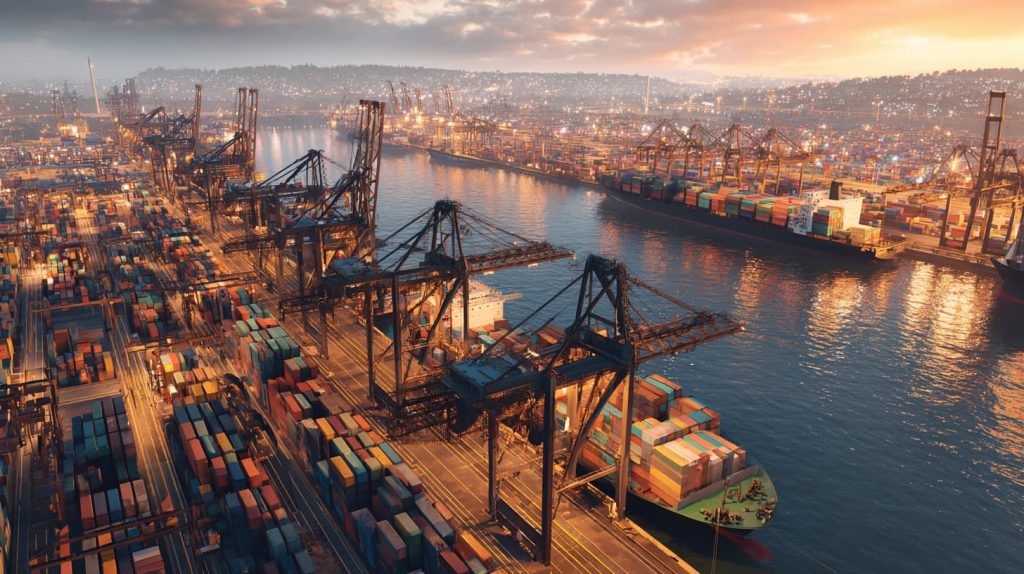Rising Ocean Freight Rates: What’s Causing Them and How to Prepare
Over the past few months, the ocean freight world has been anything but calm. Container shipping rates are climbing to levels we haven’t seen since the major logistics crises of recent years. So, what’s going on? Why the sudden spike? And more importantly, how can you prepare your business to stay competitive?
Let’s break it down clearly and directly.
Why Are Costs Going Up So Fast?
1️⃣ Shifting Trade Dynamics
The ongoing U.S.–China trade war has fueled market uncertainty, followed by spikes in demand after temporary tariff pauses.
2️⃣ Rerouting Due to Geopolitical Conflicts
Geopolitical issues like the war in Ukraine and rising tensions in the Red Sea and Strait of Hormuz have forced many carriers to take longer routes, like sailing around Africa. That adds anywhere from 10 to 14 days per trip, driving up fuel and operating costs significantly.
2️⃣ Container Shortages and Port Congestion
With vessels taking longer detours and delays stacking up, containers are taking more time to return to origin ports. This creates a domino effect: global availability shrinks, and prices rise due to reduced supply. Fewer containers in rotation = higher usage costs.
3️⃣ Higher Insurance and Surcharges
High-risk areas are now seeing insurance premiums jump by as much as 50%. On top of that, additional charges for congestion and security are being added—directly increasing your final freight rate.
4️⃣ Climate Disruptions and Green Regulations
Heatwaves across Europe are affecting key inland routes like the Rhine River, and droughts continue to restrict Panama Canal traffic. On top of that, new environmental regulations require cleaner fuels and greener technology, both of which cost more.
How Does This Affect Your Business?
- Your logistics costs may spike suddenly, eating into margins.
- Unplanned delays in delivery could lead to stockouts and unhappy customers.
- Space and container availability are tighter than ever, potentially slowing down your operations.
- You may be forced to raise prices, putting your competitiveness at risk.
Bottom line? Poor planning could cost you customers and business opportunities.
Strategies to Minimize the Impact of Soaring Ocean Freight Rates
1. Diversify Routes and Transportation Modes
Nearshoring: Bring suppliers closer to reduce reliance on ocean freight.
Intermodal transport: Mix ocean, rail, and trucking to cut overall costs.
2. Lock in Long-Term Agreements with Carriers
Volume contracts (Name Account Rates: Secure preferential rates in exchange for committed volumes.
Freight forwarder partnerships: Access better deals through shipment consolidation.
3. Optimize Inventory and Purchasing
Smarter demand forecasting:: Avoid panic buying that clogs your supply chain.
Strategic safety stock: Maintain reserves without overspending.
4. Leverage Technology for Efficiency
Real-time tracking platforms: Keep an eye on container movements to prevent delays.
Logistics optimization tools: Use AI to pick the most cost-effective carriers and routes.
5. Explore Regional Trade Alternatives
Buy closer to home: Sourcing from Latin America or Eastern Europe can cut distance and risk.
Use trade agreements: Reduce exposure to extra tariffs through smart sourcing.
Conclusion: Adaptability Is Key
The spike in ocean freight rates isn’t just a temporary, it reflects a new global logistics reality. It’s driven by a mix of complex global forces that are here to stay and will continue to impact supply chains.
Now more than ever, partnering with a knowledgeable freight forwarder—one that truly understands the market and acts as your strategic ally—can make all the difference between getting your cargo delivered on time or being left stuck at the dock.
Need Help Navigating Rising Freight Costs?
Our international trade experts are ready to help you minimize costs and boost efficiency.
Reach out today, protect your supply chain and keep your business moving.



